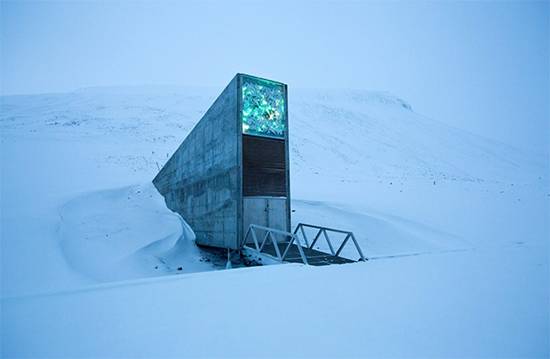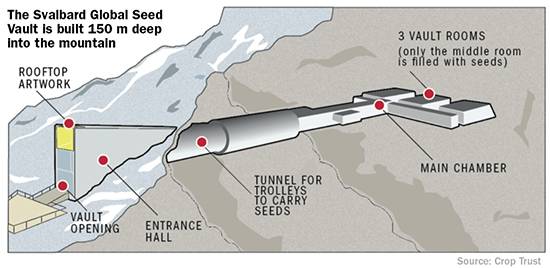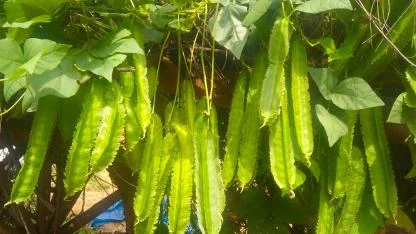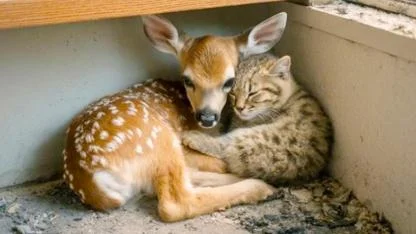Inside the “Doomsday” Vault: The Global Seed Vault Safeguarding Humanity’s Future
Known worldwide as the “Doomsday Vault,” the Global Seed Vault is a secure genetic library that preserves millions of crop seeds from around the globe. Built to withstand disasters, climate change, conflict, and biological threats, this monumental structure serves as a final safety net for our agricultural biodiversity. As modern farming relies increasingly on fewer crop varieties, the need to protect rare and ancient seeds has never been more urgent. The Global Seed Vault offers hope, stability, and resilience in a world where environmental changes pose growing risks to global food security.
Why Svalbard was chosen as the vault’s home
The decision to build the Global Seed Vault in Svalbard was strategic and carefully calculated. Positioned more than 1,300 kilometers from the North Pole, Svalbard is one of the safest and most geologically stable places on the planet. Its remote location minimizes exposure to conflict or political instability, while the region’s naturally cold climate supports long-term seed preservation.

Even in the event of power loss, the surrounding permafrost helps maintain freezing temperatures inside the vault, allowing seeds to remain viable for centuries. Svalbard’s high altitude and lack of tectonic activity further reduce the risks of flooding, earthquakes, or environmental hazards. These advantages make it the perfect sanctuary for storing irreplaceable genetic material from crops that support global agriculture.
Inside the vault’s secure chambers
Entering the Global Seed Vault feels like stepping into a futuristic fortress of survival. A striking concrete entrance tunnel cuts deep into the icy mountain, leading to a brightly illuminated corridor that stretches more than 130 meters underground. Behind secure steel doors lie three storage chambers built to hold as many as 4.5 million seed samples. Although only one chamber is currently in use, it already houses over 930,000 distinct varieties of crops, ranging from staple foods like rice, wheat, and barley to rare and endangered species that may hold critical genetic traits.

Each seed sample is carefully processed, dried, sealed in airtight foil packets, and stored inside reinforced boxes placed on industrial shelving. This meticulous method keeps the seeds dormant and protected from moisture, pests, and temperature fluctuations. The vault’s controlled environment ensures that tiny grains tucked inside these packets could one day grow into the crops needed to restore fields or breed new varieties resistant to disease and climate stress.
The global importance of agricultural biodiversity
The Global Seed Vault exists because agricultural biodiversity is rapidly declining. Modern farming relies heavily on a narrow range of high-yield crops, making global food supplies more vulnerable to pests, diseases, and shifting climate patterns. Today, just a handful of crops provide most of the world’s calories, and thousands of traditional varieties have already disappeared due to industrial agriculture, urbanization, and changing farming practices.

This shrinking genetic diversity weakens our resilience. When crops lack genetic variation, a single disease or drought can cause widespread crop failure, threatening millions of people. The seed vault serves as an essential solution to this growing problem. By preserving a vast spectrum of genetic traits—drought tolerance, pest resistance, heat resilience, and more—it provides the raw materials scientists may need to create stronger, more adaptable crops in the future.
Real-world examples of the vault in action
Although often portrayed as a backup for apocalyptic scenarios, the Global Seed Vault has already been used in real-life emergencies. In 2015, researchers withdrew seeds to rebuild collections destroyed during the conflict in Syria, proving the vault’s effectiveness as a global safeguard. The restored seeds were used to recreate vital agricultural research programs, demonstrating that the vault supports not only future generations but also current global food security efforts.

These withdrawals highlight the vault’s role as a living insurance system. It does not replace regional seed banks; instead, it supports them by providing a secure backup should environmental or political conditions threaten their collections.
A neighboring archive with a shared mission
Just a short distance from the Global Seed Vault lies another extraordinary structure: the Arctic World Archive. This digital preservation center stores important documents, artworks, scientific data, and historical information from around the world.

Using special technology that encodes data on highly durable film, the archive ensures that knowledge will outlast disasters that might erase digital records. Together, these two Arctic facilities protect humanity’s biological and cultural heritage for centuries to come.
Why the vault represents hope for future generations
The Global Seed Vault is more than an engineering feat—it is a symbol of unity, foresight, and trust among nations. As climate change accelerates and global challenges intensify, the vault stands as a reminder that humanity can take collective action to protect what matters most. Every seed stored within its frozen chambers carries the possibility of renewal, growth, and survival. For future farmers, scientists, and communities, the vault offers assurance that the world’s agricultural foundations are preserved, no matter what challenges lie ahead.











Yorumlar
Kalan Karakter: